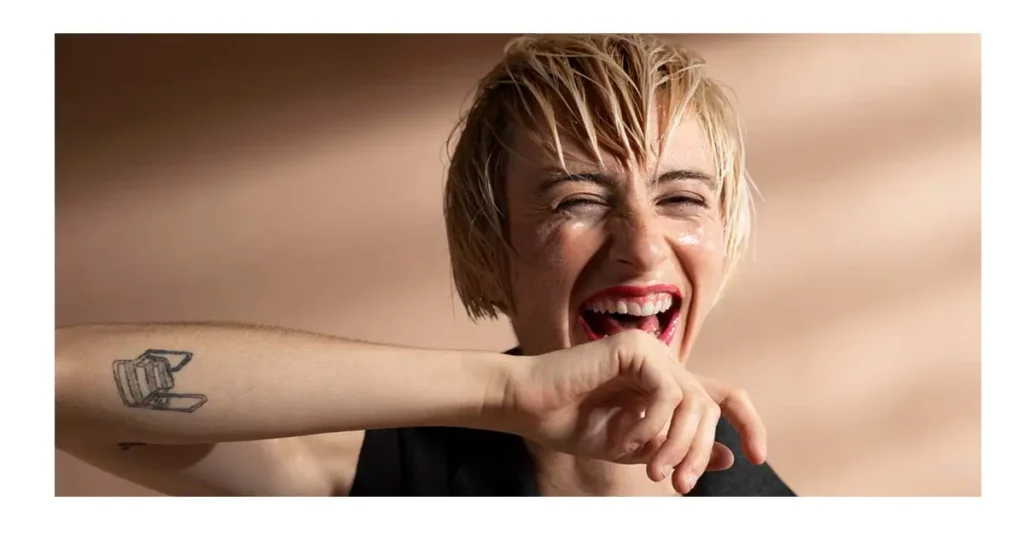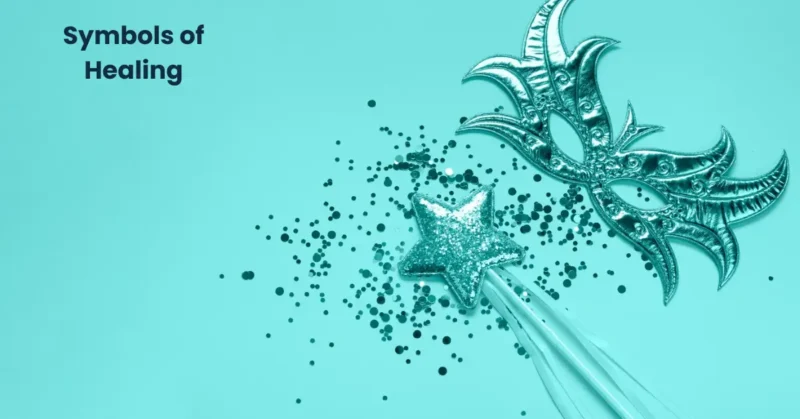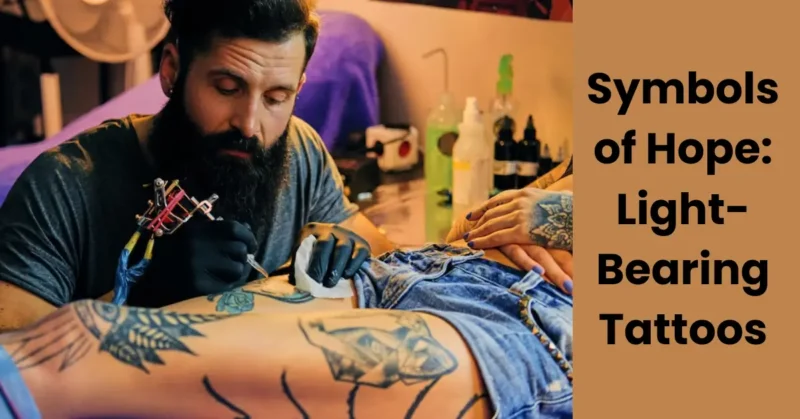Explore the empowering world of mental health tattoos—symbols of strength, healing, and hope. Explore meaningful tattoo ideas like the semicolon, phoenix, and lotus flower, and read real-life stories behind the ink that inspire awareness and resilience.
Thank you for reading this post, don't forget to subscribe!How Mental Health Tattoos Are Symbols of Healing and Hope
More than just body art, mental health tattoos are incredibly intimate representations of resiliency, development, and metamorphosis. As the conversation around mental wellness becomes more open, many individuals are choosing tattoos to honor their emotional journeys and express their inner strength.
From the powerful image of a phoenix rising from ashes to the quiet resilience of a semicolon, these tattoos serve as daily reminders of battles fought and victories won. In this article, we explore the rising trend of mental health tattoos, uncover the meaning behind popular designs, and share real-life stories that highlight the healing power of ink.
Unlocking Inner Strength: The Power of Mental Health Tattoos
In addition to being statements of power, transformation, and survival, mental health tattoos are more than just ink on the skin. As the stigma around mental health gradually dissolves, individuals increasingly turn to body art as a deeply personal way to honor their psychological journeys. From subtle minimalist designs to bold artistic expressions, these tattoos serve as wearable affirmations, constant reminders of triumphs over internal battles.
This growing trend reflects a cultural shift toward openness, vulnerability, and self-awareness. Mental health tattoos are not merely aesthetic—they embody experiences, scars, and stories. They provide a voice to the voiceless, marking milestones in healing and igniting conversations around anxiety, depression, trauma, and resilience.
Symbols of Strength: Tattoos That Embody Mental Fortitude
The Phoenix: Rising from Ashes
A powerful emblem of rebirth, the phoenix is a favorite among those who have endured and survived major emotional turmoil. Rising from its ashes, it signifies resurrection after destruction, perfect for individuals recovering from depression, addiction, or PTSD.
The Lion: Courage in the Face of Adversity
A lion tattoo symbolizes courage, power, and the ability to face fears head-on. It represents inner battles fought with bravery, especially in men and women overcoming chronic anxiety, bipolar disorder, or childhood trauma.
The Anchor: Staying Grounded Through Storms
Anchors provide stability during life’s tempests. This symbol resonates with those who have weathered emotional chaos and emerged grounded. It often appears in tattoos dedicated to loved ones or as a personal reminder to stay steady during emotional upheaval.
Survivor Mental Health Tattoos: A Symbol of Strength and Resilience
Symbols of Healing: Ink That Indicates the Healing Process
The Semicolon: A Pause, Not the End
The semicolon (;) has become a global mental health emblem through Project Semicolon. It represents a continuation rather than an ending—a literary metaphor for a life paused by struggle but not concluded. Many use it to signify survival after suicidal thoughts or attempts.
The Lotus Flower: Beauty from the Mud
The lotus represents transcendence, rebirth, and purity, and grows in murky waters. It is deeply meaningful to those who have found clarity through chaos and those committed to spiritual and emotional growth.
Feathers: Lightness and Liberation
Feathers symbolize the lightness of being, freedom, and the act of letting go. Individuals recovering from grief, trauma, or toxic relationships often choose feather tattoos to mark their return to emotional lightness.
Symbols of Hope: Light-Bearing Tattoos
The Sun: Light After Darkness
The sun signifies positivity, warmth, and new beginnings. People emerging from depressive episodes or emotional isolation find the sun tattoo a radiant symbol of their return to joy and light.
Stars: Guidance in the Dark
Stars are eternal guides in the night sky. They symbolize hope, dreams, and goals. A star tattoo often marks a turning point—someone’s decision to pursue therapy, sobriety, or a better future.
Birds in Flight: Freedom from Emotional Cages
Birds in flight exhibit liberation and a fresh feeling of purpose. Those who felt emotionally caged or restricted often choose this design to reflect their newfound autonomy and the courage to soar.
Real Lives, Real Ink: Personal Stories Behind Mental Health Tattoos
Amanda’s Semicolon: “My Story Isn’t Over”
Amanda, a 28-year-old social worker, battled severe depression throughout college. Behind her ear, she selected a tiny semicolon. It serves as a subdued reminder that I persisted.
Jamal’s Phoenix on His Chest
Jamal, a war veteran, wears a large phoenix across his chest, symbolizing his PTSD recovery. “I came back from the battlefield shattered. But I built myself again. Stronger. The phoenix reminds me of that every day.”
Emily’s Lotus on Her Wrist
Emily survived childhood abuse and underwent years of therapy. It reminds her of her beautiful lotus tattoo, that suffering can lead to beauty. “I am the lotus. I emerged from the muck.
The Deeper Effect: Using Tattoos as Advocacy and Awareness Tools
Beyond helping people heal, mental health tattoos have other uses. They spark conversations in social spaces, reduce stigma, and encourage others to seek help. Each tattoo tells a story, turning pain into purpose. They also promote solidarity—communities form around shared symbols, creating support systems that extend beyond physical ink.
For mental health advocates, these tattoos become part of their activism. A simple wrist tattoo can invite dialogue, support, and empathy. In digital spaces, hashtags like #SemicolonTattoo and #MentalHealthInk connect thousands globally, showcasing shared courage and vulnerability.
FAQs
Q. What tattoo represents mental strength?
A tattoo commonly represents mental strength is, the lion, a universal symbol of courage, power, and resilience. Lions reflect the ability to face fears and endure emotional challenges head-on. Another powerful option is the anchor, which signifies stability and groundedness through life’s storms. Individuals who have overcome anxiety, trauma, or depression often choose these designs as daily reminders of their endurance. The semicolon’s subtle yet powerful symbolism also resonates with mental strength, marking the choice to continue despite struggles. These tattoos are more than visual art—they’re affirmations of inner toughness and perseverance.
Q. What tattoo symbolizes hope and strength?
The phoenix is a striking tattoo symbol that represents hope and strength, rising from ashes to begin anew after adversity. It tells the story of personal rebirth and emerging stronger after hardship. In a similar vein, the sun represents hope by illuminating the dark and pointing the way to brighter times. The feather can also embody a hopeful lightness, suggesting liberation from past burdens. These designs serve as powerful motivation to keep moving forward. Whether large or minimalist, each tattoo becomes a visual commitment to hope, endurance, and future growth.
Q. What tattoo symbolizes healing and strength?
The lotus flower is a profound symbol of healing and strength, as it blooms beautifully from muddy waters, just as many rise from trauma and emotional pain. It represents spiritual awakening, self-renewal, and resilience. The semicolon is another powerful emblem used by those who’ve faced mental health struggles, symbolizing a pause but not an end in life’s journey. Feathers, known for their lightness and connection to spiritual transformation, also reflect healing and inner calm. These tattoos act as physical expressions of emotional recovery and personal evolution after hardship.
Q. What tattoos represent mental health recovery?
Tattoos that represent mental health recovery often include the semicolon, a widely recognized symbol of survival, continuation, and hope for those overcoming depression or suicidal thoughts. The butterfly, signifying transformation and renewal, is another popular choice among individuals celebrating their progress. The lotus flower reflects growing from adversity into strength and peace. Some choose quote tattoos like “This too shall pass” or dates significant to their recovery journey. Each of these designs serves as a milestone—a permanent reminder of how far they’ve come and the strength it took to heal.
Conclusion
Mental health tattoos transcend aesthetics. They are transformative tools for storytelling, recovery, and advocacy. Each symbol, be it a lion, lotus, or semicolon, marks a chapter in a personal journey. Together, these designs form a language of resilience, healing, and hope.
We honor the individuals who carry their mental health journeys on their skin, turning scars into symbols and pain into power. These tattoos are not just art, they are armor, affirmations, and beacons. As the movement grows, so does the conversation, leading to broader acceptance, understanding, and mental health awareness across cultures.
Let us continue this fusion of body art and emotional strength—one tattoo at a time.
Read more articles on Health and Wellness Tips.
You may like to read:
Permanent and Semi-Permanent Tattoos: Your Guide to Body Art that Endures




